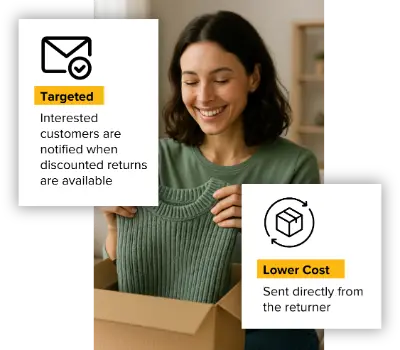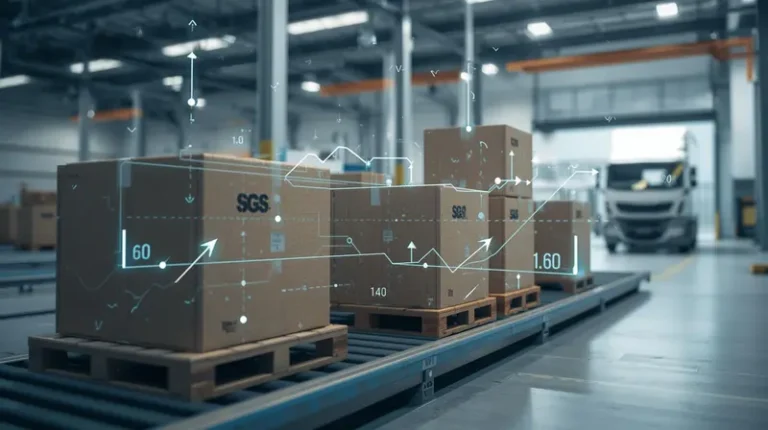Top 12 In-House Shipping Mistakes That Are Eating Your Profits (and How to Fix Them)

Last updated on July 15, 2025

In this article
 36 minutes
36 minutes
- 1. Hiding or Misjudging Shipping Costs (Sticker Shock!)
- 2. Not Integrating Shipping Costs into Your Pricing (Undercharging and Losing Money)
- 3. Using the Wrong Packaging (Oversized, Overweight, or Under-protected)
- 4. Slapping Shipping Labels on Incorrectly or Incorrect Addresses
- 5. Forgetting Shipping Insurance for Valuable Orders
- 6. Sticking with One Shipping Carrier or Service for Everything
- 7. Slow Order Processing and Shipping Delays
- 8. Failing to Provide Tracking and Clear Communication
- 9. Ignoring International Shipping Complexities
- 10. Neglecting Returns and Reverse Logistics
- 11. Relying on Manual Processes and Outdated Systems
- 12. Not Recognizing When to Outsource or Partner Up
- Frequently Asked Questions
Running your own in-house fulfillment for an ecommerce business can feel empowering, as you have full control over your shipping process. But with great power comes great responsibility (and plenty of room for error!). The truth is, warehouse management and shipping operations are complex, and even minor mistakes can snowball into lost profits. Are your shipping practices silently draining money and upsetting customers? Let’s shine a light on the top 12 in-house shipping mistakes that might be chewing up your margins, and, importantly, how to fix them. We’ll cover everything from shipping costs fiascos to packaging materials problems, so you can tighten up your operation and keep both your customers and your finance team happy.
1. Hiding or Misjudging Shipping Costs (Sticker Shock!)
The Mistake: You’re not transparent about shipping fees, or you charge high shipping prices without a strategy. Maybe your website surprises customers with a big shipping fee at checkout, or you’re undercutting yourself by offering free shipping on everything without crunching the numbers. In-house teams sometimes set shipping charges arbitrarily, leading to either cart abandonment if too high or lost profit if too low. Shipping is not one-size-fits-all; get it wrong, and it hits both sales and profits.
Why It’s Eating Your Profits: If you’re overcharging, customers bail. If you’re undercharging (or offering “free shipping” that’s not baked into product prices), you absorb the cost. Consider that as many as 80% of consumers expect free shipping on online orders, and 48% will abandon their cart due to high shipping costs. That’s almost half of your potential sales gone because shipping turned them off. On the flip side, offering free or flat-rate shipping without accounting for it means you might be losing money on each order shipped. It’s a delicate balance.
How to Fix It: Develop a clear shipping strategy and communicate it. If possible, offer free shipping above a certain order value to encourage larger carts (this way, shipping is subsidized by a higher-margin order). For example, “Free shipping on orders over $50” is a common tactic. If you do charge shipping, be up-front about costs early in the checkout or even on product pages; nobody likes a surprise $15 shipping at the last step. It’s important to develop a pricing strategy that incorporates shipping costs to maintain a healthy profit margin. To figure out your rates, calculate your average shipping cost per package and decide how much you can absorb, and how you decide what to charge customers for shipping as part of your overall pricing strategy. You might find that using flat-rate shipping or zone-based rates works well. Also, regularly shop around with shipping carriers for better rates. As an in-house shipper, you can negotiate with carriers (UPS, FedEx, DHL, USPS, etc.), especially as your volume grows. Don’t forget to factor in packaging costs too. The key is to make shipping fees a neutral factor: not so high that they scare customers, but not so low that you take a loss. Many successful ecommerce sellers build the majority of the shipping cost into product pricing, so they can advertise “free shipping”; it’s psychologically powerful. Just be sure your overall pricing is still competitive after doing so.
Slash Your Fulfillment Costs by Up to 30%
Cut shipping expenses by 30% and boost profit with Cahoot's AI-optimized fulfillment services and modern tech —no overheads and no humans required!
I'm Interested in Saving Time and Money2. Not Integrating Shipping Costs into Your Pricing (Undercharging and Losing Money)
The Mistake: This is related to the above but deserves its own call-out. You treat shipping as an afterthought in your business model. Perhaps you set product prices without considering fulfillment expenses, picking, packing, and postage. Then you either offer free shipping or a flat low rate, and suddenly realize your profit margins have vanished. In-house operations often overlook indirect shipping costs, too: packing tape, boxes, shipping label printers, and even the labor cost of packing orders. All these are part of the shipping costs. If you’re not accounting for them, you might actually be selling at a loss once fulfillment is done, even if sales look good on paper.
Why It’s Eating Your Profits: Every dollar you spend getting an order out the door directly cuts into the order’s profit. If your average order is $30 and it costs you $10 to fulfill and ship it, you need to be making more than $20 gross profit on that order to net anything. Many businesses, in a rush to offer attractive prices, forget to factor in these costs and end up effectively paying for customers to take their products. It’s an insidious leak because you might not notice it until you do a careful analysis or your cash flow starts hurting.
How to Fix It: Do a thorough cost breakdown per order. Include direct carrier fees, packaging materials, and labor. Know your fully loaded cost to ship an average order. Then revisit your product pricing. You might need to raise prices a bit or set a minimum order for free shipping. Also, look for ways to cut the cost side: are you using the right box size to avoid dimensional weight upcharges? Could a lighter packing material reduce weight-based postage? Can you negotiate better rates with carriers? Additionally, consider shipping software or fulfillment solutions that can optimize costs (for example, rate-shopping software that picks the cheapest carrier for each package based on destination). Another pro tip: measure and weigh your products accurately and update those in your shipping system; many carriers charge based on dimensions/weight, and discrepancies can lead to unexpected surcharges. Cost control in shipping and fulfillment is essential to protect your bottom line and maintain profitability. Bottom line: make sure each order shipped is still profitable for your business by balancing the equation of price, cost, and shipping fee.
3. Using the Wrong Packaging (Oversized, Overweight, or Under-protected)
The Mistake: You grab whatever box is handy to ship a product, even if it’s way bigger than needed. Or you overpack with excessive padding “just to be safe.” Alternatively, the opposite, you skimp on protective packaging, and items arrive damaged. Using inappropriate packaging materials or box sizes is a classic in-house shipping error. It might seem minor, but it has big repercussions: shipping carriers charge by size and weight (dimensional weight), and bad packaging leads to product damage and returns.
Why It’s Eating Your Profits: Oversized boxes inflate your shipping costs unnecessarily. For instance, shipping a small item in a big box means you’re paying to ship a lot of air. Carriers will charge by dimensional weight if the box is large, which could cost far more than a snugger package. Those costs add up across hundreds of shipments. On the flip side, flimsy or insufficient packaging means more packages get damaged in transit. A broken product = a return or free replacement, plus shipping costs lost, and possibly a lost customer. Remember, over 60% of returns are due to shipping errors or product damage in transit. That statistic includes items that likely weren’t packed well. So, whether you’re over-packing or under-packing, you’re hurting the bottom line, either through higher fees or through lost inventory and customers.
How to Fix It: Optimize your packaging choices. Invest in a range of box sizes or mailer pouches and use the smallest package that safely fits the item. This minimizes wasted space and keeps dimensional weight down. For protection, use appropriate cushioning (bubble wrap, air pillows, packing paper), but don’t go overboard. You don’t need to wrap a durable item in ten feet of bubble wrap. A lean approach saves material costs and weight. Choosing the right packaging is essential for minimizing shipping costs while still protecting the product. If you find your team routinely using too large boxes because it’s “easier” or you only stock one size, it’s time to diversify your box inventory. Also, train staff on proper packing techniques; improper handling of packing can cause damage even with good materials (e.g., not enough cushioning on the bottom of a box). If breakage is a problem, do some tests: pack and drop test some products to see if your method holds up. There are eco-friendly packaging options too that can both protect items and appeal to eco-conscious customers (while possibly reducing weight). In short, right-size everything. This will cut shipping fees, reduce damage rates, and even make customers happier (nobody likes receiving a giant box for a tiny item or unboxing a beat-up product).
4. Slapping Shipping Labels on Incorrectly or Incorrect Addresses
The Mistake: You might be surprised how often this happens in-house: the wrong shipping label on the wrong box, or labels that fall off, or even handwriting errors if you do manual labels. Also, some businesses forget to double-check the customer’s address for completeness. A small label mix-up can send a package to the wrong customer, or no customer at all (return-to-sender black hole). It’s an easy mistake when you’re fulfilling orders in batches and not using systematic checks. Similarly, not including necessary shipping documents (like customs forms for international shipments) is a related mistake that leads to returns or delays.
Why It’s Eating Your Profits: A mislabeled shipment often means you have to reship the order at your cost (once the mistake is discovered). That’s double shipping cost, double packaging, and potentially a refund or appeasement to the customer who didn’t get their item on time. It’s essentially an unforced error that drains money and also hits your customer satisfaction. If the package goes to the wrong person, you might lose the product too (if they decide to keep the extra item). For international shipments, missing or incorrect documentation can cause the package to boomerang back or get stuck in customs, leading to frustrated customers and often you eating the cost of re-shipment or refunds. It’s not just money; your brand reputation suffers with each shipping mistake. Customers might forgive one mix-up with a sincere apology and quick fix, but consistent errors will drive them (and their friends) away.
How to Fix It: Implement a robust labeling and verification process. If you’re not using shipping software, strongly consider it; these systems can automatically pull the correct address and order info and print labels, reducing human error. Many will also let you scan order barcodes to match labels to orders. If you must do it manually, at least do a double check: e.g., two people verify the label matches the order, or compare the name on the label to the packing slip inside. Ensure labels are securely affixed (invest in a quality label printer and use the right label size; if taping paper labels, tape all around so it doesn’t peel). For address accuracy, use address validation tools (many shipping software have them built-in), they’ll flag if an address seems incomplete or invalid. For example, USPS has an API to standardize addresses. Train your team to eyeball addresses too (if an address lacks a street number or zip code, someone should catch that). For international, use your carrier’s online tools or software that prompts for all required info (tariff codes, customs description, etc.). Essentially, introduce checks and balances in your shipping process. It might slow things by 5 seconds per order to verify the label, but those 5 seconds are worth avoiding a $20 reship or a lost customer. Over time, as volume grows, you’ll definitely want automation here; mis-shipments don’t scale well!
5. Forgetting Shipping Insurance for Valuable Orders
The Mistake: You ship high-value items with only the standard carrier liability or no insurance at all. Perhaps you assume packages will arrive fine (most do), or you just never looked into insurance options. Many small in-house shippers skip insurance to save a few bucks, not realizing the one time a $500 order goes missing, they’re out that money. Carriers typically include only minimal coverage (e.g., shipping carriers like UPS/FedEx often include $100 of coverage by default). If you’re sending pricier products, that may not cover the cost if they’re lost or damaged.
Why It’s Eating Your Profits: If a package is lost in transit or stolen off a customer’s doorstep (hello, porch pirates!), and you didn’t insure it, you’ll likely have to send a free replacement or issue a refund out of pocket. That’s a direct hit to your bottom line. Even if you do have some default coverage, filing claims for reimbursement can be a pain and not always successful. So you might still end up eating the cost. One or two lost expensive shipments can wipe out the profit from dozens of other orders. It’s Murphy’s Law, the one time you skip insurance might be the time you really wish you had it.
How to Fix It: Adopt a sensible shipping insurance policy. You don’t need to insure every single package, which could indeed get costly. But set a threshold: for example, any order over a $X value gets insured. Many businesses pick a number like $100 or $200. Above that, either the customer can be offered insurance at checkout, or you can just include it for peace of mind. Shipping insurance provides peace of mind by allowing customers to recover the value of lost or damaged items, which can enhance customer satisfaction and trust. Shipping software or carrier websites usually make it easy to add insurance when creating the label; it’s often just a small fee per $100 of value. If you’re shipping extremely pricey items (like jewelry, high-end electronics), consider third-party insurance companies that specialize in parcel insurance; they might offer better rates or fewer hassles than carriers’ default insurance. And make sure you know the carrier’s rules: proper packaging and proof of value are often required for claims. If you do a lot of volume, check if your shipping carriers or insurance providers offer bulk insurance plans. The cost of insuring an item is usually quite low relative to the potential loss; it’s like an inexpensive safety net. Ultimately, you want to be in a position that if something goes wrong in transit, you’re not losing money (or at least you can recover most of it through a claim). Plus, it lets you confidently offer a free replacement to the customer without hurting your business, which is good customer service.
6. Sticking with One Shipping Carrier or Service for Everything
The Mistake: You have a favorite carrier and you blindly use them for all shipments, or you default to one shipping method (say, always ground shipping) without considering better options. It’s common for in-house operations to, for example, take everything to the local post office every day, or only use UPS for every package, or only offer standard shipping speeds. This loyalty or inertia can mean you’re not using the right shipping carrier or service level for each situation. Different carriers have different strengths: one might be cheaper for local deliveries, another for international deliveries, another for heavy packages, etc. Similarly, some items might really need expedited shipping to meet customer expectations, while others are fine going slower.
Why It’s Eating Your Profits: By not shopping around, you could be overpaying. For instance, maybe USPS flat-rate boxes could save you money on small, heavy items, but you’re using FedEx and paying more. Or you’re sending everything priority air when many customers would have been fine with ground, meaning you’re spending extra without reason (I have a great story about this…connect with me on LinkedIn and I’ll share it with you). Also, if you don’t consider distance and shipping zones, you might ship cross-country from one warehouse when it might have been cheaper to split inventory or use a fulfillment partner on the other coast (if your volume justifies that). Additionally, relying on one carrier means that if they have a service outage or rate hike, you’re stuck. And finally, customers have different needs; some want it fast, some are okay waiting. If you don’t offer, say, an expedited shipping option, you might lose impatient customers. Conversely, if you only offer expensive express shipping, budget-conscious customers bail.
How to Fix It: Compare and diversify. Regularly compare shipping rates across carriers—USPS, UPS, FedEx, DHL, regional carriers—especially as rates change annually. Use shipping rate calculators or multi-carrier shipping software that automatically picks the cheapest label for each order based on weight/zone/delivery time. Often, a hybrid approach works best: e.g., USPS for lightweight residential packages, UPS/FedEx for heavier or business addresses, DHL for international, etc. Also consider offering multiple shipping options at checkout (standard, expedited, overnight). That way, customers can choose to pay more for fast delivery or save money and wait. It sets the right expectation, and you’re not footing the bill for express unnecessarily. Evaluate different shipping methods to optimize both efficiency and cost, as the right mix of shipping methods can improve your fulfillment process and customer satisfaction. Another tip: look into zone skipping or fulfillment centers in different regions if your business is growing, for example, partnering with a network like Cahoot or using a 3PL to place some stock closer to the West Coast if you ship a lot there, to cut down zones and costs. And negotiate; carriers often give volume discounts. If you’ve been giving one carrier all your business, you might actually use that as leverage to ask for better rates, or use competitive quotes to get a discount. Bulk shipments can help you secure even better rates and further improve your shipping strategy, especially if you regularly send large quantities of packages. The goal is to use the right tool for the job for each shipment. It might add a bit of complexity to manage multiple carriers, but with software and a little setup, you’ll save money and improve transit times. Plus, having backups ensures you’re not completely hamstrung if one carrier has delays (like we see every holiday season or during weather events).
If you sell through multiple channels, such as your website and online marketplaces, make sure your shipping and order management systems are integrated. This helps you manage inventory, synchronize orders in real time, and streamline fulfillment to prevent overselling.
Looking for a New 3PL? Start with this Free RFP Template
Cut weeks off your selection process. Avoid pitfalls. Get the only 3PL RFP checklist built for ecommerce brands, absolutely free.
Get My Free 3PL RFP7. Slow Order Processing and Shipping Delays
The Mistake: Orders come in… and they sit. Maybe your team is small, or inventory is disorganized, or you simply don’t have a sense of urgency. In-house fulfillment sometimes falls into a lax routine: “We’ll ship orders twice a week” or “It takes us 3–4 days to get an order out the door.” Unlike big fulfillment centers that operate daily, a small business might let orders queue up. Alternatively, you might find yourself forced to delay because you run out of packing time, or products aren’t located quickly (a warehouse management issue). The result is slow shipping from the customer’s perspective, and delays in order fulfillment can directly impact customer satisfaction.
Why It’s Eating Your Profits: Today’s customer expectations are sky-high. People are spoiled by Amazon Prime’s 1–2 day delivery, and even other retailers stepping up their game. If your processing is slow, the whole delivery is slow, leading to customer dissatisfaction, bad reviews, or even order cancellations/chargebacks. A customer might tolerate a one-week delivery if told upfront, but if you promise quick shipping and then delay, you’ve got a problem. Furthermore, slow turnaround can mess with cash flow (you aren’t collecting payment until shipped in some platforms) and cause operational pile-ups (orders bunching up, causing errors). Worst case, a competitor could swoop in; if you sell on marketplaces like Amazon or eBay and take too long, the buyer might go elsewhere, or you could get penalized by the platform for slow handling. On your own site, you’ll see lost future sales from unhappy customers. Essentially, shipping delays hurt your reputation and can shrink your repeat business. Customers remember if it took forever to get their order.
How to Fix It: Streamline and speed up your fulfillment process. First, set a standard: e.g., “All orders ship within 1 business day” (or 2 days if one day isn’t feasible yet). For businesses able to process orders quickly, offering same-day delivery can be a major competitive advantage and significantly improve the customer experience. Then organize your operation to meet it. This means efficient order processing (integrate your ecommerce platform with a fulfillment system so orders print automatically, etc.), and efficient picking and packing. Arrange your warehouse or stockroom for logical picking routes; keep popular items near the packing station. Batch process orders when possible (but don’t batch so much that you delay some). Essentially, treat fulfillment as a daily task, not something to procrastinate. If volume is too high for your current staff, consider hiring extra help or shifting people from other tasks during peak times. Automation can help too, even simple things like a conveyor or cart to move orders, or software that prioritizes orders by shipping speed. Another angle: communicate accurately with customers. If something will be delayed (maybe an item is back-ordered for a few days), let them know immediately. Customers are more forgiving if informed. But generally, to compete in ecommerce in 2025, you should aim to exceed customers’ delivery expectations. If you can’t do 2-day shipping, you can at least excel at fast handling so that the only delay is the carrier transit. One more tip: monitor your shipping metrics, average handling time, percentage of orders shipped late, etc. If you see slip-ups, dig into why (e.g., “Mondays we’re swamped catching up on weekend orders; let’s consider weekend shifts or a better system”). By speeding up your in-house fulfillment, you’ll delight customers and avoid the profit-killers of cancelled orders or appeasement discounts. Streamlining your shipping and order fulfillment process helps you exceed customer expectations and build long-term loyalty.
8. Failing to Provide Tracking and Clear Communication
The Mistake: You ship orders out and assume the job’s done. The customer, however, is left in the dark about where their package is. Not sending tracking numbers or shipping confirmation emails is a common oversight, especially for smaller operations. Or maybe you have tracking, but you’re not proactively communicating delays or issues. Customers might have to chase you down to ask, “Where’s my order?” If your ecommerce platform or process doesn’t automatically notify customers of shipment status, this is a big gap.
Why It’s Eating Your Profits: Lack of communication doesn’t directly charge you money, but it creates customer anxiety and dissatisfaction. A confused or worried customer is more likely to file a chargeback (“item not received”) or leave a negative review or bombard your customer service (taking up your time, which is a cost). In worst-case scenarios, they might refuse delivery or send the item back because they lost trust that it would arrive. Also, from a brand perspective, providing tracking is such a basic expectation now that not doing so makes your business look amateur, which can erode customer confidence in buying from you again. Remember, you want repeat buyers; one-and-done sales are not as profitable long-term. So anything that undercuts loyalty (like a bad shipping experience) ultimately eats into future profits.
How to Fix It: Communicate, communicate, communicate. It’s not hard these days to automate this. Use your shopping cart or marketplace’s notification system, or a shipping software that emails tracking info to the customer as soon as you buy the label. Make sure the email includes the carrier and tracking number link. Many customers will track the package themselves (some obsessively). Also, consider adding a delivery confirmation email, for example, a note that says “Your order was delivered today, we hope everything’s great!” This not only reassures them, but can prompt them to reach out if they didn’t actually receive it (so you can address it promptly, rather than finding out days or weeks later via a complaint). For transparency, have a clear shipping policy page on your website that tells customers how long order processing takes, what carriers you use, and how they’ll get tracking info. Keep customers updated on the status of their customer’s order, from processing to delivery, so they always know where their customer’s order stands. If you face a delay (say a sudden backlog or a stock issue), proactively email affected customers with an apology and new ETA, maybe even offer a small coupon for the inconvenience if it’s significant. Customers value honesty. It’s amazing how a potentially angry customer can turn understanding when you pre-emptively explain the situation instead of them having to ask. Essentially, treat customers how you’d want to be treated when waiting for an online order. Keep them in the loop. It costs almost nothing and can significantly increase customer satisfaction, leading to repeat sales instead of refunds or negative word-of-mouth.
9. Ignoring International Shipping Complexities
The Mistake: Selling globally can be a huge growth area, but it’s easy to mess up. A common mistake is treating an international order like a domestic one. That could mean not filling out customs paperwork properly, not calculating duties/taxes, or using the wrong carriers for international routes. Shipping internationally comes with unique challenges, such as navigating complex cross-border regulations and understanding the global supply chain to avoid costly delays. Maybe you don’t label the package with the right HS code or a detailed description, or you underdeclare value, thinking it’ll slip through (risky and not legit!). Also, not considering the best shipping method, e.g., sending an international package via an expensive service by default, or conversely, choosing a super cheap, slow mail service without telling the customer the trade-offs.
Why It’s Eating Your Profits: International mistakes can be costly. A package held or returned by customs due to incorrect paperwork means you might be refunding the customer and paying return shipping (or abandoning the shipment entirely, losing product and shipping cost). If you didn’t make it clear who pays import duties (you or the customer), you might get hit with unexpected bills or angry customers faced with COD charges on delivery. Using the wrong carrier or service can mean you paid, say, $100 for a shipment that could have been $40 with a different solution, multiply that by many orders, and ouch. Also, international shipping without tracking or with extremely long transit can lead to a high customer support burden and refunds (“it never arrived”, even if it’s just delayed). In summary, the global arena has lots of pitfalls that can directly and indirectly cost you money.
How to Fix It: Get educated on international shipping or use services that simplify it. First, decide if you want to ship worldwide or only to certain countries. It’s okay to start small (maybe you only do Canada and the UK at first, for example). For each country, learn the basics: what customs forms are needed? (Usually a commercial invoice or CN22/CN23 form). What are the international shipping options? Postal services (like USPS First Class International) are cheap but can be slow and have limited tracking; express couriers (UPS, DHL Express, FedEx) are fast and reliable but pricey. A good strategy is to offer customers a choice: economical vs express. Use carrier tools or third-party logistics providers that handle international shipping all day long; they often have software to generate the forms and even calculate duties. Efficient ecommerce shipping operations are essential for managing international orders, coordinating with carriers, and ensuring smooth delivery across borders. Speaking of duties, decide if you’ll send DDU (duties unpaid, customer pays on arrival) or DDP (duties paid, you prepay them). Customers appreciate knowing this upfront. Many ecommerce businesses opt for DDP to provide a better experience, though it means you pay those fees (just incorporate them into what you charge for international shipping). Modern shipping software (see a pattern here?) can once again be a lifesaver; many have integrations for cross-border shipping that will print proper labels, customs documents, and even estimate taxes. Also, ensure your product descriptions on customs forms are accurate and honest, don’t try to get cute with “gift” or under-valuing; not only is it illegal in many places, it often backfires and gets packages held. Lastly, maybe set up some content on your site for international buyers, e.g., “We ship internationally from the US. Please allow 2–4 weeks for delivery via economy post. Any customs fees are the buyer’s responsibility.” This manages expectations. As you streamline, you might find some carriers excel: e.g., DHL Express is expensive but extremely fast worldwide and often worth it for higher-value orders. USPS/Postal might be great for small, low-value goods to certain countries. It’s all about matching the service to the order. Don’t ignore those details, master them, and you’ll open your biz to the world without bleeding profit from mistakes.
10. Neglecting Returns and Reverse Logistics
The Mistake: Many sellers focus on outbound shipping and forget that things often come back. If you don’t have a clear returns management process, you might handle each return in a panic, or worse, ignore them. Some in-house operations make returns hard for customers (no included return label, slow refunds), which frustrates people. Others might be too lenient (accepting anything back even beyond policy). Also, failing to inspect returned items can lead to reshipping a faulty product to the next customer. A disorganized returns area in your warehouse is another sign of trouble, with piles of opened packages with no system. In short, treating returns as an afterthought is a mistake.
Why It’s Eating Your Profits: Returns are a cost of doing business in ecommerce (especially in certain categories like apparel). If not handled efficiently, they can double your shipping costs (outbound and inbound) with no revenue to show for it. A clunky returns process can lose you future sales, and customer dissatisfaction skyrockets if they can’t easily return a problematic item or wait forever for a refund. They might blast you on social media or never purchase again. On the flip side, if you don’t evaluate returns, you might be missing patterns (e.g., a product that keeps breaking in shipping, indicating a packaging fix needed, or perhaps a size issue causing exchanges). Not restocking resalable returns promptly is another profit leak—that’s inventory you paid for sitting idle. And of course, paying for return shipping on avoidable returns (like sending the wrong items leading to returns) is just money down the drain.
How to Fix It: Develop a clear, customer-friendly returns workflow. Define your return policy (e.g., 30 days, new condition, etc.) and stick to it, but also make it easy for the customer. Including a return shipping label in the box or an easy online returns portal can streamline things (you can deduct return shipping cost from refund if that’s your policy, or offer free returns if your margin allows—many customers expect free returns now, which can be a selling point). Once a return comes in, inspect it quickly. Decide: is it resaleable? If yes, return it to stock immediately (update inventory in your system). If not, decide if it can be refurbished, sold as open-box, or needs to be written off. Track reasons for returns; this data is gold. Maybe a certain product has a 15% return rate, all citing “didn’t fit”; you might need better size charts or product descriptions. Or if a lot of items come back damaged, re-evaluate the packaging or the product’s durability. Set up a designated area and process for returns so they don’t get mixed up with outgoing shipments. For customer communication: notify them when you receive the return and when the refund is processed (people get antsy about their money; timely refunds build trust). It might sound like extra work, but a smooth reverse logistics process can actually save sales. Often, a customer who has a good, painless return experience will give you another chance and order an alternative or replacement. If the return process is awful, they’ll walk away, and you lose that lifetime value. Also consider if you can reduce returns proactively: e.g., provide more info to customers pre-purchase (reduce the chance they buy the wrong item or size). As part of your sustainability efforts, implement a program to encourage customers to return packaging materials for reuse or recycling. But no matter what, some returns are inevitable; handle them efficiently to recoup losses. Bonus: if returns are overwhelming you, there are 3PL services and return-processing companies that can help. But an in-house team can manage if you give it the attention it deserves.
11. Relying on Manual Processes and Outdated Systems
The Mistake: You’re doing everything by hand, typing addresses, deciding carrier by gut, managing inventory in spreadsheets, etc. This might work when you have 5 orders a day, but at 50 or 500, it’s a recipe for errors and burnout. Warehouse management challenges grow as order volume increases. Without automation, mistakes slip through (wrong items picked, missed orders, etc.), and efficiency remains low. If you haven’t adopted any shipping software, inventory tracking system, or automation tools, you’re essentially flying blind and slow.
Why It’s Eating Your Profits: Manual work is labor-intensive and error-prone. Labor costs money; if it takes 10 minutes to process and ship one order by hand, that severely limits how many orders one employee can handle in a day, meaning you either cap sales or hire more people (at more cost). Errors due to manual processes (sending the wrong product, mis-typing an address) have the costs we discussed earlier—reshipping, refunds, etc.—and lacking an integrated system means you might not have real-time inventory counts, leading to overselling (selling something you don’t actually have in stock). Oversells lead to cancelled orders or split shipments later, which again cost you in customer trust and possibly extra shipping. Not using shipping software likely means you’re missing out on discounted shipping rates, too. Many platforms have rate discounts or let you compare easily. Overall, an inefficient operation bleeds money slowly but surely: overtime hours, extra staff, higher error rates, and even slower shipping speeds (which, as we saw, can risk customer loyalty).
How to Fix It: Embrace technology and automation in your fulfillment operations. This doesn’t mean you need fancy robots (though autonomous mobile robots for picking are a thing in large warehouses!). Start with software: a good order management system (OMS) or shipping software can import orders from your sales channels and integrate with your ecommerce website for efficient order management, help you pick and pack systematically (with picking lists or even barcode scanning), and print labels in bulk with the best carrier rates. There are also warehouse management systems (WMS) that track bin locations and monitor warehouse inventory in real time, so even a new worker can find products quickly and ensure accurate fulfillment. If you’re a small biz, even an off-the-shelf solution like Cahoot, ShipStation, or others can dramatically cut your fulfillment time and errors. They also integrate with inventory management, updating stock levels after each sale automatically across channels, preventing oversells on your ecommerce website and marketplaces. Batch processing orders in software can turn that 10-minute manual job into a 1-minute automated job. Automation rules can pick the cheapest carrier for each order, so you don’t have to think about it.
Seamless integration between your shipping system and ecommerce platforms streamlines order processing, connects your sales channels, and ensures efficient fulfillment from order to delivery.
Over time, also consider semi-automated equipment: e.g., a label printer (a must-have, if you’re still cutting and taping paper labels, stop!), maybe a barcode scanner system to verify picks, even conveyor belts or packing station setups that streamline the picking process. Yes, there’s an upfront cost to tools and software, but the ROI is usually high. Reducing errors and increasing throughput means more orders out with less labor, which either saves cost or frees your team to focus on growth tasks. Plus, these systems often provide analytics, so you can spot where bottlenecks are, see if you’re spending too much on certain shipping routes, etc. In 2025, even small ecommerce businesses are adopting fairly advanced tech to remain competitive. The playing field is leveling, and cloud-based systems are affordable. If you want to keep up, ditch the pen-and-paper or spreadsheet method for something more robust. Your margins will thank you.
Scale Faster with the World’s First Peer-to-Peer Fulfillment Network
Tap into a nationwide network of high-performance partner warehouses — expand capacity, cut shipping costs, and reach customers 1–2 days faster.
Explore Fulfillment Network12. Not Recognizing When to Outsource or Partner Up
The Mistake: Last but not least, a strategic mistake: holding on to in-house fulfillment when it’s no longer the best option. This can manifest as you growing beyond your storage space or capacity but still insisting “we’ll handle it ourselves” while service quality suffers. Or not investing in additional staff when order volume doubles, leading to all the issues above. Some entrepreneurs wear it as a badge of honor to do everything in-house, but sometimes that pride can hurt profits and growth. If your shipping is consistently behind, error-prone, or limiting your expansion (like you can’t offer 2-day delivery nationwide but competitors can), it might be time to consider outsourcing to a fulfillment center or using a hybrid approach.
Why It’s Eating Your Profits: When you’re over capacity, mistakes and delays pile up, and we’ve covered how those cost money (refunds, lost customers). Also, you might be missing sales opportunities. For example, if you can’t fulfill orders fast enough, you might have to put your online store on pause during peak times (losing revenue), or you can’t scale up marketing because your warehouse can’t handle more orders. Labor is another aspect: if unemployment is low, finding and keeping warehouse workers at competitive wages might be challenging and expensive. Labor shortages can make it even more difficult for a business owner to maintain efficient in-house fulfillment, leading to increased labor costs and operational headaches. Ecommerce businesses must carefully evaluate their fulfillment strategy to maintain cost control and customer satisfaction. In contrast, a professional fulfillment center can often do it more efficiently at scale. Not leveraging emerging technologies or expertise that fulfillment companies have means you might be operating sub-optimally. Basically, if in-house is becoming the bottleneck or a money pit, sticking to it will be harmful.
How to Fix It: Evaluate your fulfillment strategy regularly. There’s no one-size-fits-all; in-house can be great for some businesses, but know the signs when you might need help. Those signs include: routinely working overtime to ship orders, significant error rates, inability to meet shipping-time expectations, storage overflow (stacking boxes in your bathroom?), or simply that you’d rather focus on marketing and product development than packing boxes all day. If these are true, explore options. Outsourcing doesn’t have to mean giving up control completely. You could start by partnering with a 3PL (third-party logistics) provider for a portion of your orders (maybe just your East Coast orders ship from an East Coast 3PL to reduce zones, for example). There are also innovative fulfillment networks like Cahoot, where you can collaborate with other warehouses to get closer to customers. These solutions can often lower your shipping zones and costs, and enable things like 2-day delivery nationwide by distributing inventory, something tough to do solo unless you open multiple warehouses yourself. Financially, compare the costs: sometimes paying a fulfillment fee per order is actually cheaper than your in-house cost when you factor in rent, salaries, and shipping inefficiencies. Even if it’s a bit higher, the trade-off might be worth it if it buys you back time to grow the business. Also, outsourcing doesn’t have to be all or nothing; some companies keep fulfilling their best-selling SKUs in-house and outsource long-tail or heavy items, or vice versa. The key is not letting stubbornness or habit dictate your logistics. Be open to change if it makes business sense. Market trends in ecommerce are toward faster and cheaper shipping. Partnering with experts can help you keep up. At the end of the day, the goal is a seamless, cost-effective shipping operation that delights customers. Whether that’s in your garage or in a pro fulfillment center, or a mix of both, should be determined by numbers and service quality, not just sentiment.
Running in-house shipping has its challenges, but the good news is that each of these mistakes has a solution. By addressing these 12 areas, you can transform your shipping from a profit-draining headache into a well-oiled machine (or at least a less squeaky one). Every efficiency gained or error avoided directly saves you money, and often improves the customer experience too. In ecommerce, logistics is the business. Get it right, and you’ll not only stop leaks in profitability but also build a reputation for reliability that sets you apart. And remember, you’re not alone; tools, technology, and partners (like Cahoot for fulfillment, as a shameless plug) are available to help even smaller businesses achieve big-league shipping performance. Happy shipping!
Frequently Asked Questions
What’s the most common shipping mistake?
Poor carrier selection that inflates costs or causes delays.
How does packaging affect shipping costs?
Wrong box sizes and materials raise dimensional weight fees and damage risk.
Is free shipping always a good strategy?
Not if it kills your margins; balance cost and customer expectation.
How do disconnected systems create problems?
They cause delays, errors, and extra labor from double entry or poor tracking.
Can automation solve most of these issues?
Yes, smart shipping software reduces errors and labor while improving efficiency.

Turn Returns Into New Revenue





